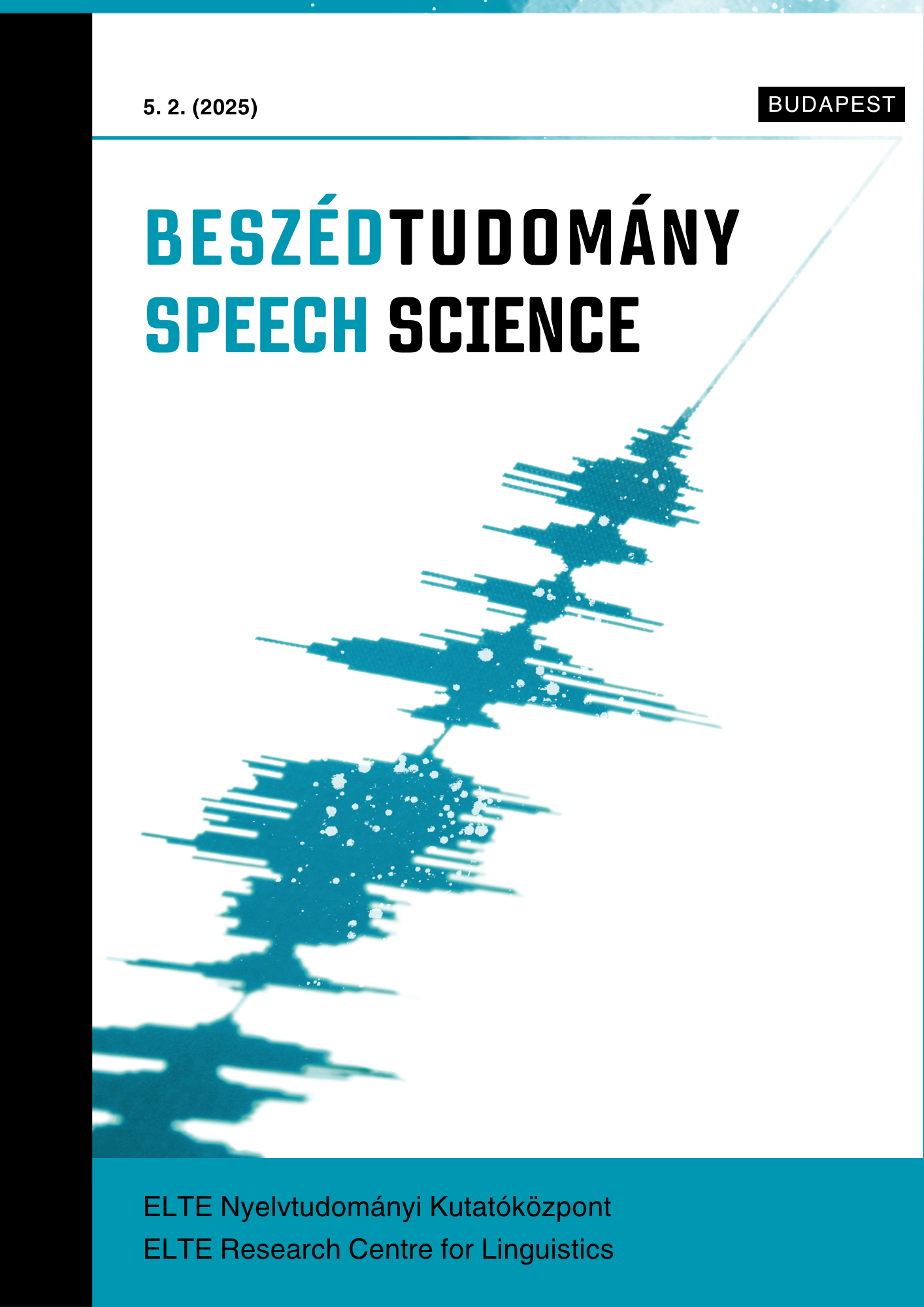Az izé strukturális pozíciója és diskurzusjelölő funkciója spontán, baráti társalgásokban
Absztrakt
Hungarian native speakers often consider izé as a stigmatized, functionless filler word (cf. Grétsy & Kovalovszky, 1980), however it plays an important role in spontaneous conversations and speech planning processes. Previous literature has revealed that izé has two types, namely, word-substituting and time-gaining izés. While the former can treat word-retrieving problems and vocabulary shortages, the latter can help solving problems in speech planning (Fabulya, 2007; Gyarmathy, 2012; Gyarmathy & Neuberger, 2013; Gyarmathy, 2015; Kondacs, 2017; Marcsenkoné Kondacs, 2023). The study investigates the phenomenon from a new, conversation analytic perspective using both qualitative and quantitative methods. It examines the structural position of izé in Hungarian conversations. The corpus under study contains audio recordings of Hungarian spontaneous, naturally-occuring, friendly conversations collected and analyzed by the author. The analysis differentiates between five structural categories (cf. Németh, 2021), and the functions of word-substituting and time-gaining izés in these positions. It seeks to answer the question whether there are further functions beyond the ones identified so far. It examines whether izé could be used in a quotative function in the Hungarian corpus like the be + like formula in English. The analysis shows that izé can have a discourse-organizing, discourse marking function and it can influence the turn-taking system.




